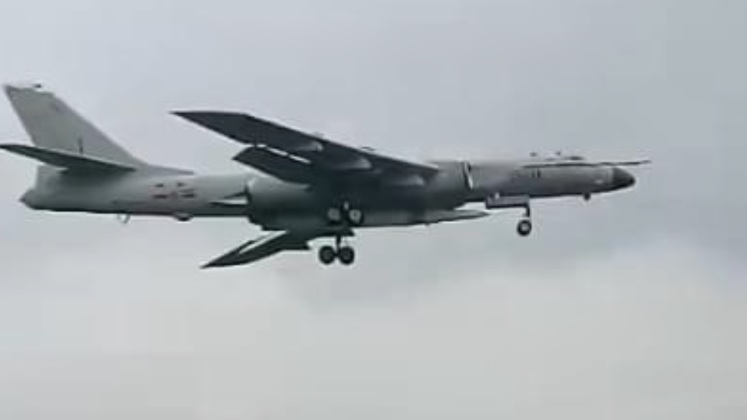News
China’s First Intercontinental Range Bomber? First Clear Footage of H-6N Ballistic Missile Variant Released

On April 19 the first clear footage showing the Chinese People’s Liberation Army’s (PLA) latest variant of the H-6 bomber, the H-6N ballistic missile carrier, was released, with the aircraft providing what will almost certainly be the country’s longest ranged strike capability by aircraft. The missile armed aircraft was first seen in October 2020. The H-6N’s development has been closely observed for some years with the mysterious missile of unknown designation, known in the West as the CH-AS-X-13, seeing speculation widely varying regarding its role ranging from an anti ship munition to an intercontinental range strategic strike platform. The H-6 is currently the only bomber in Chinese service, and while only the United States and Russia, the latter formerly as the Soviet Union, have ever produced intercontinental range bombers it is expected that the PLA will field this capability by the end of the decade with the upcoming H-20 stealth platform. The H-6N, however, may well compensate for the H-6 design’s relatively short range, intended for theatre rather than strategic operations, with the range of its missile to allow the aircraft also to engage targets at intercontinental ranges – albeit likely relying on at least one round of refuelling in the air depending on how far the CH-AS-X-13 can travel. The unveiling of the H-6N with a ballistic missile notably followed the unprecedented assigning of the PLA bomber fleet with a nuclear deterrence mission in September 2020.
The H-6 is fielded in greater numbers than any other bomber in the world, with over 270 in service while no other bomber class has even 100 operational. The aircraft is prized for its much lower operational costs and maintenance needs than Russian and American designs, and is well suited to strike operations across East Asia. Despite the age of the airframe, modern H-6 variants are among the most sophisticated in the world and benefit from 21st century manufacturing technologies – where the U.S. B-2 and Russian Tu-160 and Tu-95 saw production lines close in the 1990s. The aircraft have been used in a wide range of roles, ballistic missile strike and trainer variants being among the most unusual, with others deployed purely for anti shipping using advanced YJ-12 cruise missiles, for standoff anti surface strikes, or for electronic warfare. Deployment of a ballistic missile variant comes as Chinese ballistic missile technologies have improved rapidly, with the country pioneering a range of capabilities ranging from a ground based tactical hypersonic glide vehicle – the DF-17 – to anti ship medium and intermediate range platforms namely the DF-21D and DF-26. It remains uncertain how widely H-6N bombers with ballistic missiles will be deployed, but it follows a growing trend towards reliance on air launched ballistic missiles after Russia unveiled the MiG-31K and Tu-22M3M in 2018 carrying Kh-47M2 hypersonic ballistic missiles. The role of the new Chinese aircraft will largely depend on the capabilities of its missile.












